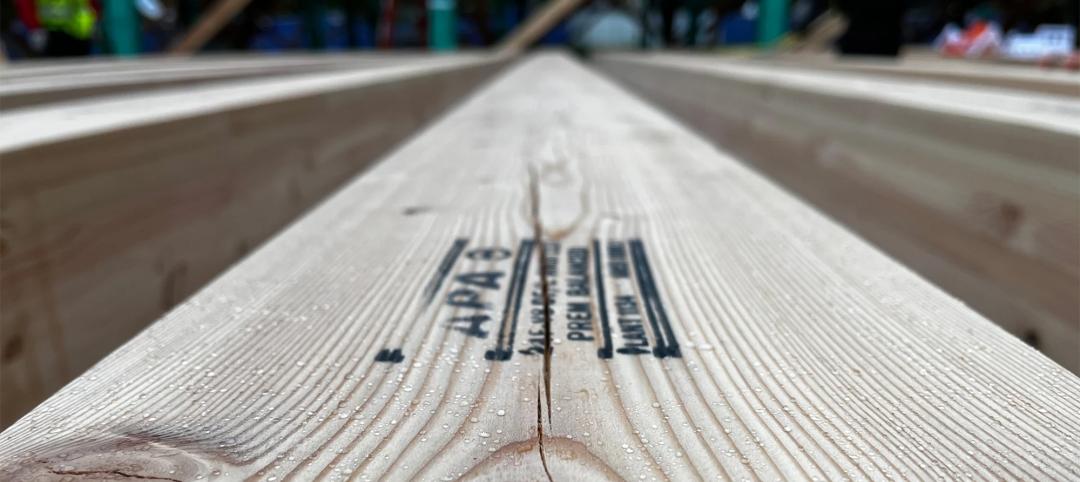The largest monthly gain in petroleum prices in over three years caused construction materials prices to expand 0.4 percent in February, ending a six-month streak when prices failed to rise, according to the March 13 producer price index release by the Bureau of Labor Statistics. On a year-over-year basis, construction input prices fell 3.9%. Nonresidential construction input prices also rose 0.4% on a monthly basis and were down 4.9% on a yearly basis.
"While conventional wisdom suggests that oil and natural gas prices will eventually rise, the adjustment period could be a lengthy one and although crude petroleum prices were up 12.3% on a monthly basis, this is likely a function of an abnormally cold February," said Associated Builders and Contractors Chief Economist Anirban Basu. "This rise is the first monthly gain since April 2014 and the eighth consecutive month in which petroleum prices were down on a year-over-year basis.
"For now, inventories of fuel remain elevated and most believe that the U.S. dollar's upward movement is not at an end," said Basu. "This, in addition to the quantitative easing that has begun in Europe and the potential for increasing interest rates in America, means that there is likely to be greater demand for U.S. fixed income assets, which will serve to further strengthen the U.S. dollar and put downward pressure on certain key construction input prices. This dynamic was widely apparent in February, during which prices for seven of the 11 key construction inputs failed to rise and no input other than crude petroleum increased in excess of one percent."

The following materials prices increased in February:
- Nonferrous wire and cable prices grew 0.8% on a monthly basis but fell 4.4% on a yearly basis
- Crude petroleum prices gained 12.3% in February but are down 53.4% from the same time last year.
- Crude energy materials prices expanded 0.9% in February but are 45% lower year-over-year.
- Concrete products prices expanded 0.2% in February and are up 4.3% on a yearly basis.
Seven of the 11 key construction inputs did not expand for the month:
- Prices for plumbing fixtures fell 0.1% in February but are up 3.0% on a year-over-year basis.
- Fabricated structural metal product prices remained flat for the month and have expanded 1.0% on a year-over-year basis.
- Prices for prepared asphalt, tar roofing, and siding fell 1.4% for the month but are up 1.7% on a year-ago basis.
- Iron and steel prices fell 5.4% in February and are down 10.6% from the same time last year.
- Steel mill products prices fell 1.8% for the month and are 3.6% lower than one year ago.
- Softwood lumber prices fell 3.7% in February and are 4.4% lower than one year ago.
- Natural gas prices fell 11.2% in February and are down 51.8% from one year ago.
Related Stories
Laboratories | Oct 2, 2024
Trends in scientific research environments: Q&A with Flad's Matt McCord
As part of an ongoing series, Matt McCord, AIA, NCARB, LEED AP BD+C, Associate Principal with Flad Architects, discusses the future of the scientific workplace.
Contractors | Oct 1, 2024
Conflict resolution is a critical skill for contractors
Contractors interact with other companies seventeen times a day on average, and nearly half of those interactions (eight) involve conflicts, according to a report by Dodge Construction Network and Dusty Robotics. The study suggests that specialty trade contractors, in particular, rarely experience good resolution from conflicts.
Museums | Oct 1, 2024
UT Dallas opens Morphosis-designed Crow Museum of Asian Art
In Richardson, Tex., the University of Texas at Dallas has opened a second location for the Crow Museum of Asian Art—the first of multiple buildings that will be part of a 12-acre cultural district. When completed, the arts and performance complex, called the Edith and Peter O’Donnell Jr. Athenaeum, will include two museums, a performance hall and music building, a grand plaza, and a dedicated parking structure on the Richardson campus.
Data Centers | Oct 1, 2024
10 biggest impacts to the data center market in 2024–2025
While AI sends the data center market into the stratosphere, the sector’s accelerated growth remains impacted by speed-to-market demands, supply chain issues, and design innovation necessities.
Contractors | Oct 1, 2024
Demographic, societal trends bode poorly for future construction workforce
U.S. employers will soon face “the largest labor shortage the country has ever seen,” according to a report from Lightcast, a labor market data and analysis firm. The problem will be especially acute in fields like plumbing, HVAC, and auto maintenance.
Contractors | Oct 1, 2024
Nonresidential construction spending rises slightly in August 2024
National nonresidential construction spending increased 0.1% in August, according to an Associated Builders and Contractors analysis of data published today by the U.S. Census Bureau. On a seasonally adjusted annualized basis, nonresidential spending totaled $1.22 trillion.
Higher Education | Sep 30, 2024
Studio Gang turns tobacco warehouse into the new home of the University of Kentucky’s College of Design
Studio Gang has completed the Gray Design Building, the new home of the University of Kentucky’s College of Design. In partnership with K. Norman Berry Associates Architects, Studio Gang has turned a former tobacco warehouse into a contemporary facility for interdisciplinary learning and collaboration.
Mass Timber | Sep 26, 2024
5 lessons in water mitigation for mass timber projects
Sustainability leaders from Skanska, RDH, and Polygon share five tips for successful water mitigation in mass timber construction.
Laboratories | Sep 26, 2024
BSL conversions: A cost-efficient method to support high-containment research
Some institutions are creating flexible lab spaces that can operate at a BSL-2 and modulate up to a BSL-3 when the need arises. Here are key aspects to consider when accommodating a rapid modulation between BSL-2 and BSL-3 space.
AEC Tech | Sep 25, 2024
Construction industry report shows increased use of robotics on jobsites
Nearly two-thirds of contractors surveyed, who cited use of robotics on jobsites, are either using monitoring and/or service/labor robotics.
















